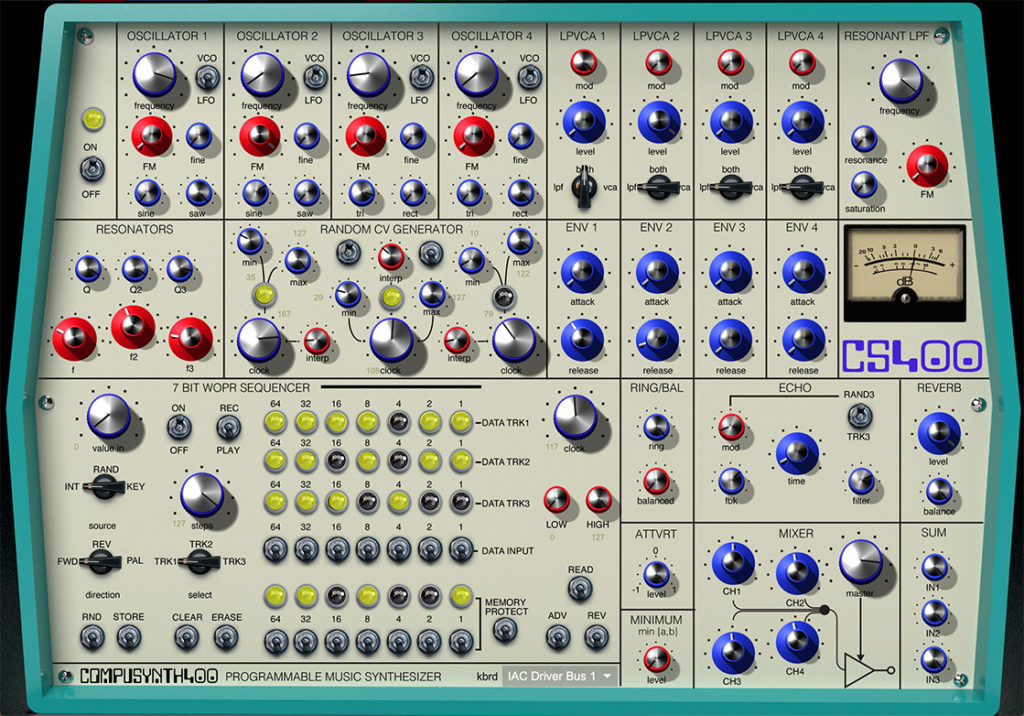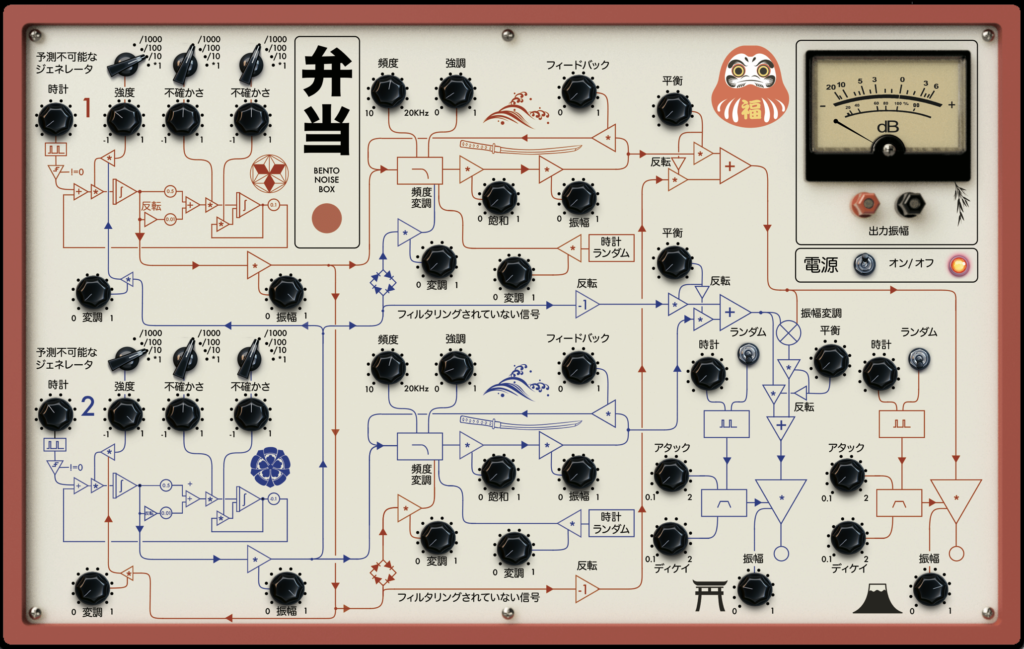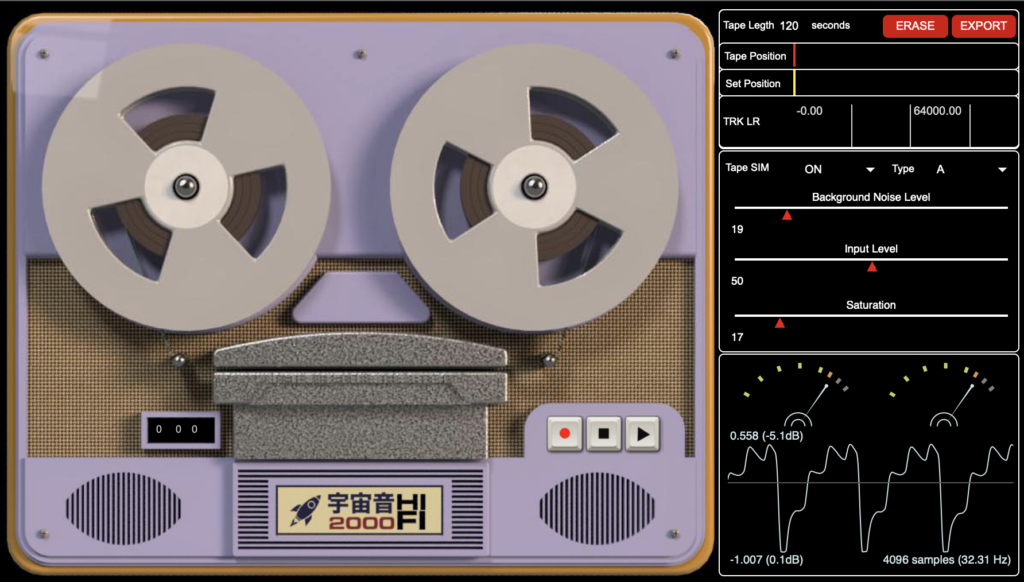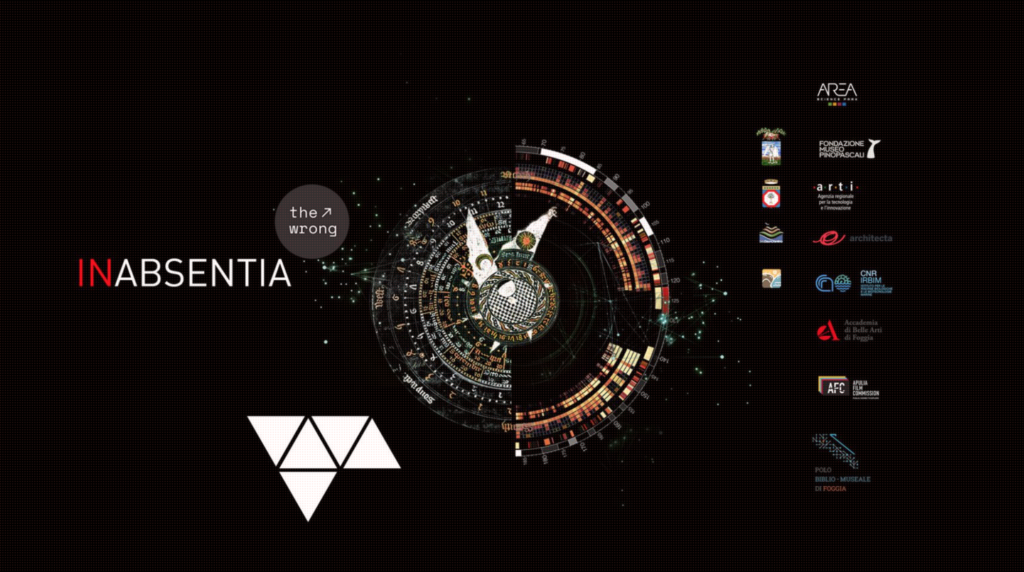CREATURE FROM THE ID
The history of what we call electronic music, not merely understood as music created using technology but as an entirely new form of music endowed with its own syntax and symbolism, where the creation of new sounds evolves side to side with a new way of organizing sound, begins in the 1951 in Europe at the radio studios of WDR in Cologne and in 1954 at RAI in Milan, almost coinciding with the birth of musique concrète at the GRMC in Paris. Almost at the same time, other radio studios and university institutions began to take an interest in this new music, including those in the United States, Poland, the Soviet Union, Japan, and later, the United Kingdom.
In the United States, in the 1950s, electronic music found its epicenter at Columbia University and among the so-called “New York School” circle led by John Cage. However, alongside serial music and Cage’s aleatory compositions, another form of electronic music emerged on the East Coast of the United States, thanks to two sound designers employed by Hollywood: Louis and Bebe Barron.
The Barrons were not interested in serialism and musique concrète but developed an entirely original idea, partly due to the limited resources available to them. Besides magnetic tape and a few function generators, Louis Barron approached the challenge of new music by creating electronic circuits capable of self-generating musical articulations. In a sense, we could say that the Barrons’ work created a concept of generative music. Today, self-generating patches are very popular on modular synthesizers, but in the 1950s, the idea of a circuit not only capable of generating sounds but also articulating them in a complex way, was completely unprecedented with the exception of the giant and clumsy RCA synthesizer. The Barron’s circuits were based on tube oscillators, modulators, and filters, connected in feedback loops to amplify instability and transform it into a new music language, their inspiration was Norbert Wiener’s Cybernetics.
All of this happened at least 10 years before the creation of the first modern voltage-controlled analog synthesizer. The concept of control voltage was completely unknown to the Barrons; for example, the envelope generator and the sequencer were absolutely unimaginable at that time. However, if we listen to the Barrons’ work on “Forbidden Planet” (MGM 1956), it is evident that, in addition to classic tape editing, they had developed circuits capable of modifying the amplitude, duration, timbre, and frequency of sounds, using other techniques. These techniques, after all, were not a secret; they were already part of the cultural knowledge of any competent electronic engineer.
For example, to create a volume envelope, one could take a low-frequency square wave and filter it with a first order high-pass filter and a first order low-pass filter. The result would then pass through a wave rectifier and be applied to a ring modulator, which would serve as a VCA.
“Creature From the ID” is a software inspired by the pioneering work of the Barrons, designed to emulate their self-generating circuits using only the (virtual) techniques available in the 1950s, thus avoiding the tools of control voltage and all those devices born from the minds of Don Buchla and Robert Moog that characterize the classic synthesizer.
With “Creature From the ID” I challenged myself, simply by listening to the Barrons’ work and reading the very few available pieces of information published on the internet, to recreate as faithfully as possible their sounds.
This is not a work of reverse engineering because I have not gained any access to the documents of the foundation that manages the Barron archive, despite having requested it.Unfortunately, I received no response.
Therefore, I must be completely honest here; this is pure guesswork. I leave it to you to judge whether I have succeeded in capturing the spirit of those sounds, those years, and that vision of an unlimited and magnificent future that the Barrons so eloquently conveyed through their music. And just to be clear on this, no AI or samples were used in this software.
Creature from the ID is an act of love that honors the Barron’s legacy and a new tool for teachers and students of electronic music who want to explore the history of electronic music in class, outside the mass market software’s paradigms.
As a professor of electronic music, I am and will always be dedicated to creating educational tools accessible to all.
I wish you infinite hours of joyful sounds.
Milan, June 2024
CODEX NATURAE
LIVE PERFORMANCE WORK IN PROGRESS
Paraphrasing the famous quote by Galileo, the book of life is written in the language of the genetic code. This code, shared by all living beings on this planet, be they bacteria, viruses, flowers, insects, or large mammals, serves as the operating system of life. The secret behind the immense diversification of living species lies in the propensity of this book to mutate and dynamically interact with its environment.
In 2018, the sci-artist and sound designer Giorgio Sancristoforo developed a system of base 4 numerical translation and sonification of DNA nucleotide sequences called “phonosomic code” at the Joint Research Centre of the European Commission.
By means of this algorithm implemented in a bioinformatics software created by the author, it becomes possible to use the genome as a programming language for a multimedia performance, defining the architecture of instruments and their score using the nucleotide triplets. Furthermore, the versatility of the phonosomic code allows for the exploitation of genetic mutations as vehicles for transforming images and sound.
In CODEX NATURAE the genome becomes a multimedia experience that can be explored through the spectator’s senses, enabling the perception of patterns hidden at the core of life itself.
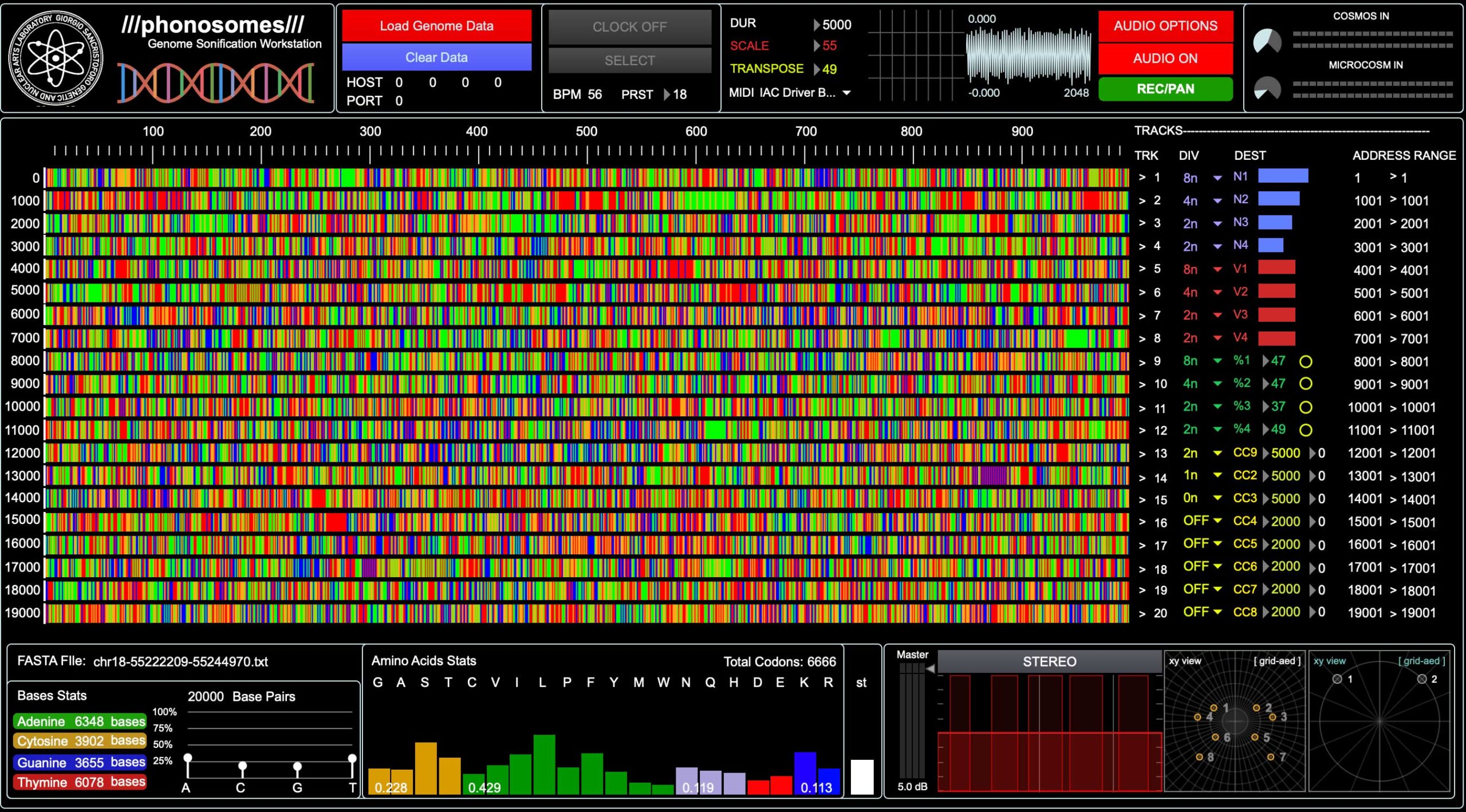
NO-FI TAPE LOOPS MUSIC STUDIO
No-Fi is a tape loop studio software made to revolutionize your creativity with warm lo-fi sound and striking simplicity!
No-Fi is not a plugin and no other software is needed, it’s standalone:
Simplicity here is paramount.
Plug-in, record and mix, just like the real hardware.
You have one mixer, five cassette loopers, one handy reverb and one delay. That’s it!
TRY THE TEMO AND GET INFO IN THE SOFTWARE PAGE
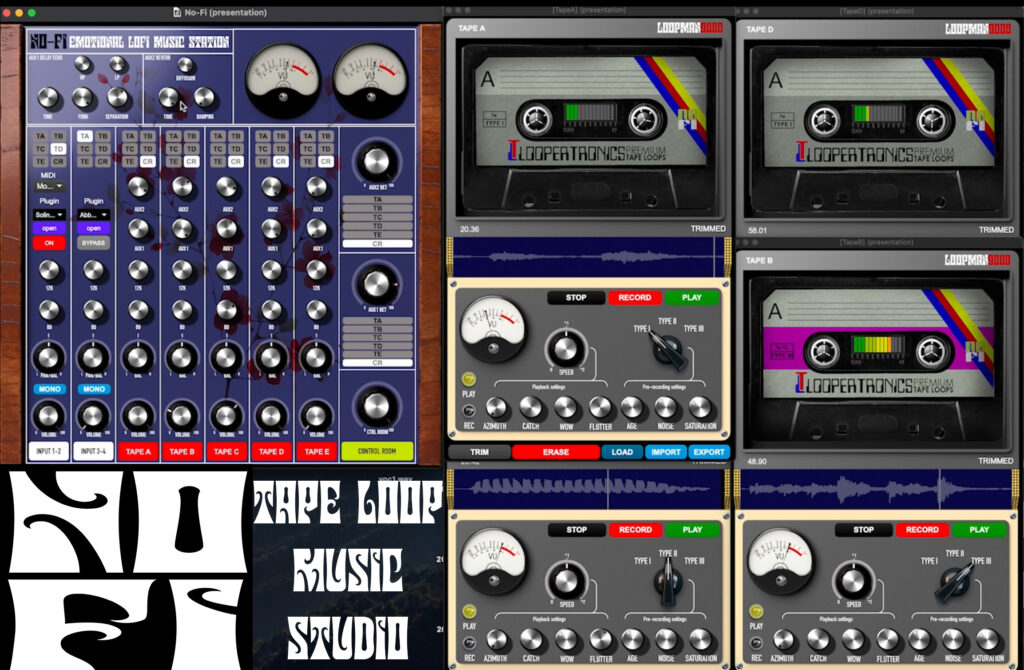
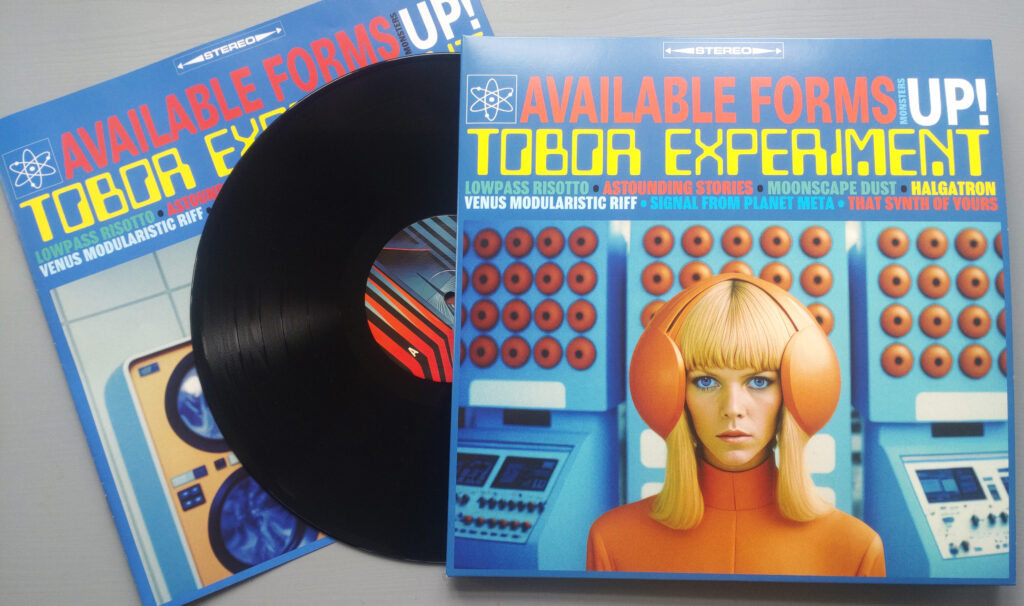
We’re thrilled to announce the return of Tobor Experiment, the visionary musical project led by the enigmatic Giorgio Sancristoforo, to the Bearfunk fold. After a twelve-year hiatus, Tobor Experiment emerges from the shadows with their second LP, “Available Forms”. Picture the ethereal ambiance of a dimly lit jazz club colliding with the futuristic vibrations of a 1970s sci-fi TV show, and you’ll begin to grasp the sonic experience that awaits. Giorgio draws on a whole host of musical inspirations, from the name checked Tim Gane & Letitia Sadier to the moog pioneers Claude Denjean & Jean Jaques Perrey. With the moogsploration of contemporary jazz Tobor Experiment invites listeners on an extraordinary musical odyssey where jazz meets electronica meets nu-disco.
Prepare to be captivated from the very first note of the infectious opener, “Lowpass Risotto” as Tobor Experiment masterfully combines familiar elements with their unique artistic vision. Resonating with undertones reminiscent of the timeless classic “Take Five” the track immediately grabs your attention. While the familiar drum shuffle sets a comforting foundation, Tobor Experiment takes an unexpected twist by infusing the composition with squelchy Moog lines and captivating hollow body guitar solos. The result is a harmonious blend of nostalgia and innovation that transports you to an entirely new sonic realm.
Continuing the journey, the mesmerizing 6/8 rhythm of “Up!” pays homage to the iconic sounds of Stereolab while showcasing Tobor Experiment’s innovative spirit. As enchanting synth pads weave through the air, you find yourself immersed in a dream-like state, carried away by the hypnotic shifting patterns of the bass and drums.
With “Astounding Stories” Tobor Experiment returns to the energetic vibes of the album opener, inviting you to surrender to a sonic tapestry rich with musical exchanges. In traditional jazz style we receive solo’s from all parties. Each instrument adding its unique voice to the narrative, creating a dynamic and engaging musical conversation.
As the album progresses, “Moonscape Dust” emerges, drawing inspiration from the atmospheric brilliance of “Low.” This track serves as a portal to an otherworldly sonic landscape where time and space lose their hold. Here, organic drums step aside, making way for a low-fi drum pattern that lays the foundation for ethereal synth pads. The composition invites you to explore the depths of your imagination, transcending earthly boundaries and allowing you to float in an immersive soundscape.
The album’s closing track, “Monsters” has an air of “Air” about it… the ethereal synths beckon you to surrender to the weightlessness of space, just allow yourself to be carried away by the infectious rhythms, intricate melodies, and atmospheric textures that shape this extraordinary musical journey.
Each track on “Available Forms” showcases Tobor Experiment’s exceptional ability to transcend musical boundaries, creating a genre-bending album that defies all expectations. From start to finish, the soundscape presented is a testament to Tobor’s relentless pursuit of musical innovation. Each composition is a fusion of diverse elements, seamlessly blending organic instruments and electronic textures in a way that challenges traditional genre classifications.
The AI-generated artwork serves as a portal to an alternate dimension. Paying homage to the retro-futuristic aesthetic of 1970s science fiction TV shows, it captures the essence of the album’s fusion between organic and electronic realms.
Preorder gatefold vinyl 12″ with 8 pages color booklet here

Mille is a standalone 1000 oscillators (200 filters and 200 LFOs) drone synthesizer with an 8 track recorder and surround spatialisation (2 or 4 channels).
Thanks to its architecture, Mille can create amazing dense and evolving drones that sound HUGE. Programming all these oscillators is simple and fast, do not get scared. Whether you look for “angelic choirs” or total chaos, Mille will serve you with an astounding number of resources that will sound like nothing else, and yes you can saturate everything like hell.
See the Software Page for details and DEMO (Apple Silicon M1-M2 STRONGLY SUGGESTED)
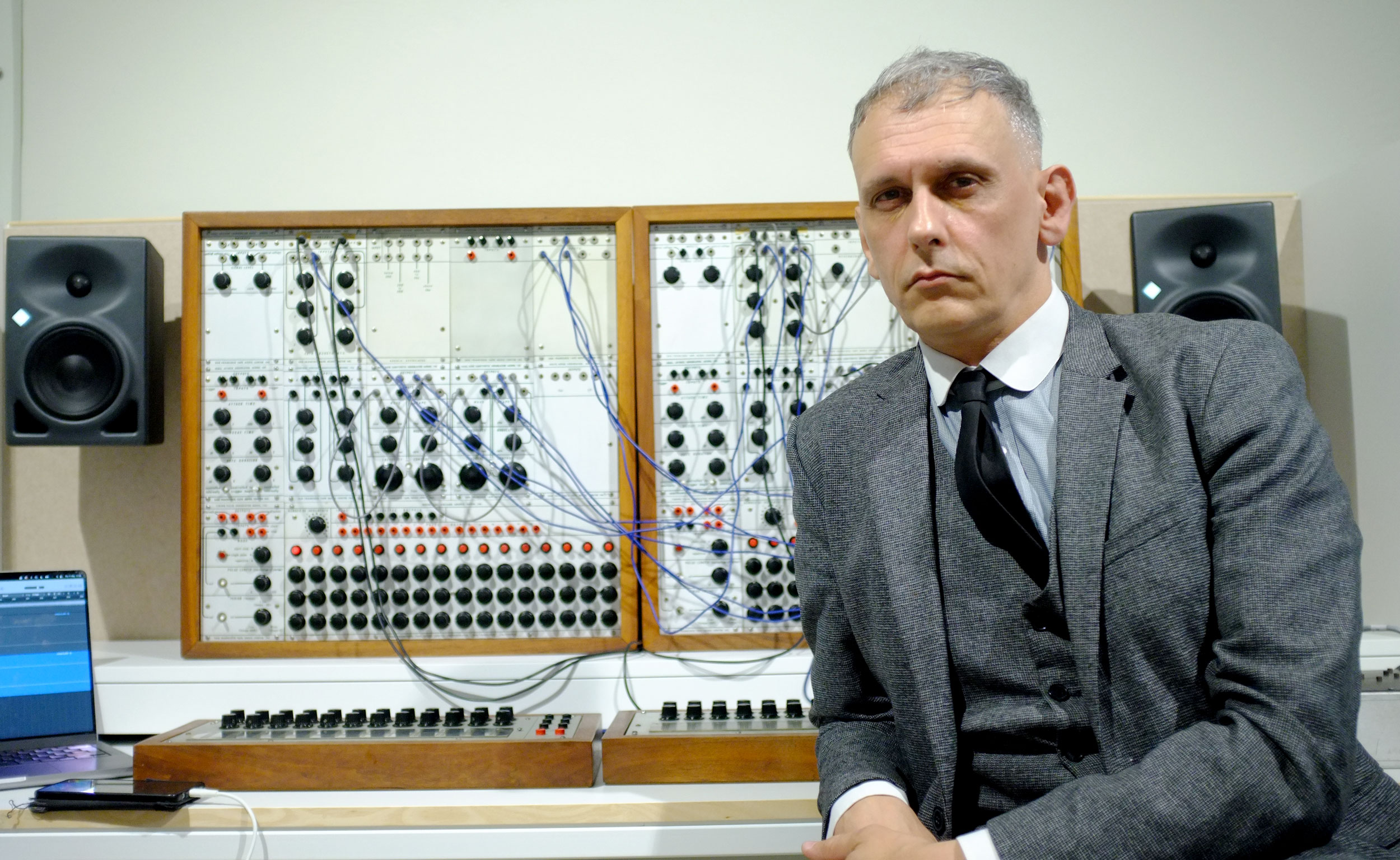
I’m very happy to share my works at the prestigious Ernst Krenek Institut, where I had the chance to play for four days and nights, an original 1967 SFTMC Buchla 100 once owned by the Austrian Composer Ernst Krenek and now exhibited at his museum in Krems an der Donau, Austria.
Krenek has been one of the most prolific composers of the XX Century, he has made pieces for theatre, ballet, opera, symphonies, electroacoustic and electronic music.
In 1938 after the Anschluss, Krenek moved to California, United States and in the late sixties he met Morton Subotnick and Don Buchla at the San Francisco Tape Music Centre. In 1967, the same year of Subotnick’s SIlver Apples of the Moon, Krenek bought la large Buchla 100 modular synthesizer which he used for a number of electronic and electroacoustic works not yet released to the public (which I hope that will be soon collected in a special release of his edition).
So here I am with Krenek’s amazing Buchla 100, probably one of the rarest and most expensive synthesizers on earth. Working with this breathtaking instrument is pure pleasure.
I hope you will like the outcome 🙂
I want to heartily thank Alethea Neubauer,Martina Pröll and Clemens Zoidl at the Krenek Institutof Krems an der Donau, for their amazing hospitality and permission to use this incredible instrument.
Read the full featured article here.
Giorgio
ONGAKU
Check it out in the Software page.
MELLOPHONICS
Halfway between digital radicalism and a collection of lullabies, Mellophonics finds its inspiration and materials in generative algorithms and neural networks where obviously something has gone wrong.
Mellophonics transports glitch music into the 21st Century; this time it is not CD players and hard drives that fail, but artificial intelligences located hundreds or thousands of miles away from the programmer; Mellophonics establishes a contemporary form of sampling through machine learning, exalting the defects and the hallucinations of the machine, putting a spotlight on the near future of music and of the non-human intelligences that will dominate the field.
How will we deal with it?
Released May 20, 2022
Trained and mixed by Giorgio Sancristoforo
Generative software: Giorgio Sancristoforo
Neural networks software: Prism SampleRNN + Tensorflow
Sample RNN is programmed by Christopher Melen at the RNCM Centre for Practice & Research in Science & Music.
BENTŌ: JAPANOISE IS HERE
Bentō is a noise box inspired by the Japanoise scene.
An instrument for live improvisation and sound design with a distinctive, extremely warm and lively character.
You can create an analog fat wall of sound with its unpredictable oscillators, filters and feedback circuits. Record to magnetic tape and export your sounds or connect Bentō to your DAW using a virtual audio driver.
Discover a world of organic, aggressive, unpredictable and warm noises.
Try the demo now!
Adeptus, a tribute to the 90th of Eliane Radigue
at the WRONG BIENNALE
Discover my sound-art at the WRONG BIENNALE at the InAbsentia Digital Pavillon
Album available HERE
Tropical Additive Synthesis Trop(x[n])
In depth explanation and tutorial on MaxMSP of the Tropical Additive Synthesis which I have developed with the Italian Mathematician and Musician Cristiano Bocci.
You can download HERE the paper.
Berna 3 early electronic music studio simulation released also for WINDOWS
The 1950s studio gets a complete restyle and many new devices.

THE LEGACY
I remember in 2009, when I was working at the first release of Berna, that first and foremost, Berna was my love letter to the RAI Studio di Fonologia Musicale, the electronic music studios of the national radio and television of Italy, founded in 1954 by the composers Bruno Maderna and Luciano Berio.
The Studio di Fonologia has been an obsession for me for many years. It was the better equipped electronic music studios of the 50s, with a lot of devices created ad hoc by the Italian Physicist Alfredo Lietti, who literally scavenged the RAI warehouses to collect all the electronic parts from broken or unused devices. The Studio was directed by Berio and Maderna, first, then by Luigi Nono, and for me these three composers are the sacred trinity of the classic Italian avant-garde. I immensely love their work and their legacy.
But behind the buttons and the mixer console, there was always the prototype of the modern sound engineer and producer: Marino Zuccheri, the technician in white coat that assisted the composers and very often created the sounds of the masterpieces of Italian electronic music. Zuccheri has been an immense inspiration for me, as a sound technician myself, and to his legacy I, once again, dedicate this new version of Berna.
WHAT’S NEW IN BERNA 3
Berna 2 was released in 2013 and it had a substantial improvement of the user interface. Meanwhile this early electronic music studio simulation become popular among schools and institutions of electronic music, among them the TUFTS University and the Royal College of Music of Stokholm. The primary goal of Berna had always been education and always will be.
Berna 3 tries to push the early electronic music studio simulation further, with more realism and details, and a new set of devices. All in all, Berna 3 will be an useful instrument both for students as well as for composers and producers who are interested in playing test equipment and historical devices.
At this time I am writing, Berna 3 is not yet completed, but we’re very close and I’m working night and day.
I’m right in the middle of the job and this time, I designed and rendered every equipment and dial in 3D, before coding the audio part.
This adds an unprecedented realism to the equipment and I cared also about crafting a vintage sound.
This time the oscillators and filters do not sound “digital”, but following the many requests from the musicians in the past years, I added a warm tone to each device. For example there are 9 different type of oscillators and each one has its own character.
Some are cleaner, some are “dirtier” and fat.
Another improvement I have made is to separate each device from the main interface. So this time every oscillator, filter, amplifier, has its own window. This has many advantages. I made the UI bigger and detailed, and using separate windows helps to keep the graphic memory and the CPU at acceptable levels.
Also, just like Gleetchlab, each device has an ON/OFF switch, which not only is realistic, but helps again to keep your computer far from heating too much.
The new test equipment I am adding to this early electronic music studio simulation have different functions, I can only anticipate a few of them. For example there are two pulse generators that will work with two high precision low frequency high-pass/low-pass filters, these together with the pulse generators will create a set of two (sort of) envelope generators (the real envelope generator was yet to be invented).
Filtering a pulse with an high pass filter at very low frequencies create a pulse with an exponential decay, and the decay depends by the cut-off frequency. Using a low-pass instead we get a log attack. So even if we can’t use a classic ADSR, you will get a functional AR without sacrificing the historical accuracy. This was a tip for which I have to thank the engineer Marco Bruno from Spin Electronics who is always a huge source of knowledge in vintage measuring instruments and electronics.
Another new device (there will be a good number) is something that is deeply related to my artistic practice and which gave me a lot of fun in the design. I thought of adding a random pulse generator, and so I added a simulation of a geiger counter and an X-Ray tube driven by a Rumkhorff coil. The geiger counter alone will give some sparse clicks which simulate faithfully the background radiation we live in, but if you turn on the Rumkhorff coil and give current to the X-Ray tube, the clicks will be faster and faster. You can use it as a clock source or as a sound and you will not get irradiated as I am sometimes, when I run these atomic experiments.
Another device is a simulation of the MESSGENERATOR MG60 used by Stockhausen for Studie II and Kontakte, and the AG-10, again used in Kontakte as well as the RAI Studios.
NO, IT’S NOT A PLUGIN
Berna3 early electronic music studio simulation is standalone only.
This does not mean that you can’t route the audio to your DAW (using a virtual audio interface), but I am interested in developing alternatives to mass market softwares.
I think that first and foremost Berna must be an EXPERIENCE and not just another plugin to stack on tracks full of other plugins.
I want to offer you some time away from your usual way of making electronic music, to think different, to approach the music in a different way. You will discover new things, you will learn a lot and you will be not distracted by other things.
Because Berna does not simulate tape splicing you can (and you will be interested in doing so) edit some files on a DAW.
But with a different goal. Not to mix and make a song, but to cut and paste sounds to create new raw materials for the tape players of Berna to be processed further with its modulators and filters.
Please remember to read the manual as many functions of Berna are not available on other software.
DOWNLOAD THE DEMO OR BUY NOW HERE
See you soon and if you want to see updates follow my Instagram
.

